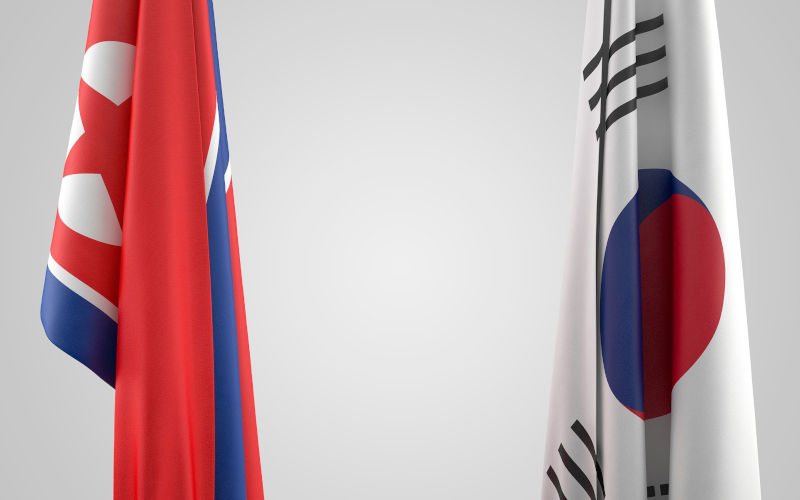South Korea pays the price for Ukraine’s fake news on North Korean troops
December 2, 2024
Some stand to benefit from the deluge of fake news from the war, while others could pay dearly.
On Nov. 21, Maria Zakharova, spokesperson of the Russian Foreign Ministry, answered her mobile phone during a press briefing. The microphone picked up the person on the other end saying, “Be sure not to say anything about reports on the ballistic missile attack.”
Earlier that day, the Ukrainian military claimed that Russia had attacked it with an intercontinental ballistic missile (ICBM). That was widely covered by the global press, which noted this was the first time an ICBM had been used in actual combat and described it as a Russian threat against the US and Europe.
By allowing Zakharova’s conversation to be overheard, Russia was deliberately signalling it didn’t intend to confirm the news about the ICBM launch.
The next day, Russian President Vladimir Putin personally revealed that Russia had fired a new intermediate-range missile, much to the embarrassment of the global press.
Shortly after the Ukrainian president himself made the claim about an ICBM launch, a Western official described the claim as “exaggerated.” Some media outlets noted that caveat, but didn’t give it much weight.
In the end, the global press proved to be easy prey for “fake news” from Ukraine, and Russia was able to take advantage of the press’s gullibility.
The reality is that a flood of “fake news” has come out of the war in Ukraine. That has grown even worse since North Korea’s controversial deployment of troops to Russia.
On Sunday, the RBC-Ukraine news agency quoted Global Defense Corp, a media outlet specialising in military affairs, in a report about 500 North Korean soldiers being killed in a Ukrainian strike on the Kursk area with the British-made Storm Shadow missile on Nov. 20. If true, that would surely be the most damage the missile has caused since its development.
But anyone with the slightest interest in military affairs would understand how unrealistic that report was. For the report to be credible, the missile would have had to penetrate Russian air defenses and strike a spot where 500 North Korean troops were gathered. Either that, or hundreds of missiles would have to penetrate air defenses and make pinpoint strikes on the various places where North Korean soldiers are stationed.
But the South Korean press jumped on the story, while noting, at the end of reports, that there was no evidence or intelligence to back up the claim.
The Korean media gave even more coverage to a CNN report suggesting that North Korean troops had been spotted not only in the Russian area of Kursk but also in Kharkiv and Mariupol, Ukrainian areas that are currently occupied by Russia. This time, it was the Ukrainian authorities who refuted those reports.
Sabrina Singh, the deputy Pentagon press secretary, said on Nov. 25 that she could confirm neither that 500 North Korean soldiers had been killed nor that North Korean troops had been deployed to occupied Ukrainian territory, in what amounted to a denial of those claims.
Singh did make the following remarks about North Korean troops: “What we’ve said, you know, before is that they’re in that region [i.e., Kursk] and certainly poised to engage the Ukrainians in combat.”
Her remarks suggest that North Korean troops are only “poised” to fight, but haven’t actually done so yet.
“I said a [. . .] couple days ago that there were some 10,000 or so North Korean soldiers in the Kursk region. [. . .] And based upon what they’ve been trained on, the way that they’ve been integrated into the Russian formations, I fully expect to see them engaged in combat soon,” US Secretary of Defense Lloyd Austin told reporters on Saturday.
Austin added that the US has “not seen significant reporting” about North Koreans being “actively engaged in combat.”
In that case, what on earth are all these reports we’ve seen over the past month about North Korean troops engaging in combat in Kursk? Are the North Korean soldiers a phantom force?
Even South Korea’s National Intelligence Service (NIS) told the National Assembly on Nov. 20 that 11,000 North Korean troops have been attached to Russian paratrooper and marine units and that some of them have been involved in combat.
“We’re currently looking closely into concrete intelligence about casualties incurred by the North Korean troops,” the NIS said on Nov. 24.
According to the NIS and Western intelligence agencies, the North Korean troops were deployed to Russia in early October and sent to Kursk in November.
During that time, there has been a veritable downpour of fake news of all varieties. There have been videos of a wounded North Korean soldier cursing Putin and of North Korean soldiers following a fleeing Russian tank, and pictures of a North Korean flag fluttering on the front in Kursk and of cups of ramen and cans of dog meat for North Korean troops.
Russia and North Korea have declined to explicitly confirm the troop deployment and are maintaining strategic ambiguity while stating they can cooperate when necessary under their recently ratified “comprehensive strategic partnership treaty.” It’s as if they were taking perverse pleasure out of the outpouring of fake news.
In fact, the price of all that fake news is being paid by another country — South Korea.
Ukrainian Defense Minister Rustem Umerov visited South Korea on Wednesday as part of a special delegation requesting aid in the form of weapons. His visit can be seen as the bill coming due for South Korea’s enjoyment of all that “fake news” about the North Korean troops deployed to Ukraine.
Even as US President-elect Donald Trump pledges to bring the war in Ukraine to an end, South Korea is on the verge of spinelessly agreeing to provide Ukraine with military aid.
First published by HANKYOREH on November 28, 2024.
For more on this topic, P&I recommends,
https://english.hani.co.kr/arti/english_edition/e_northkorea/1166145.html
